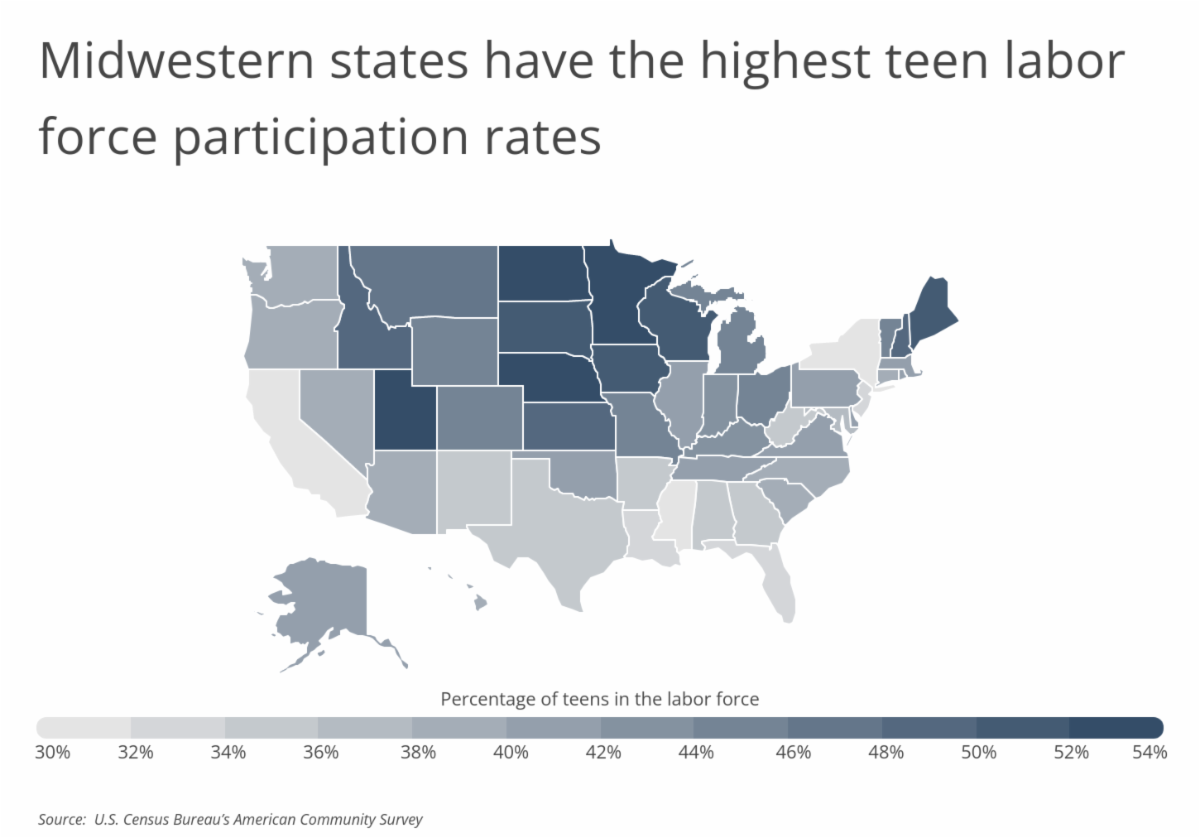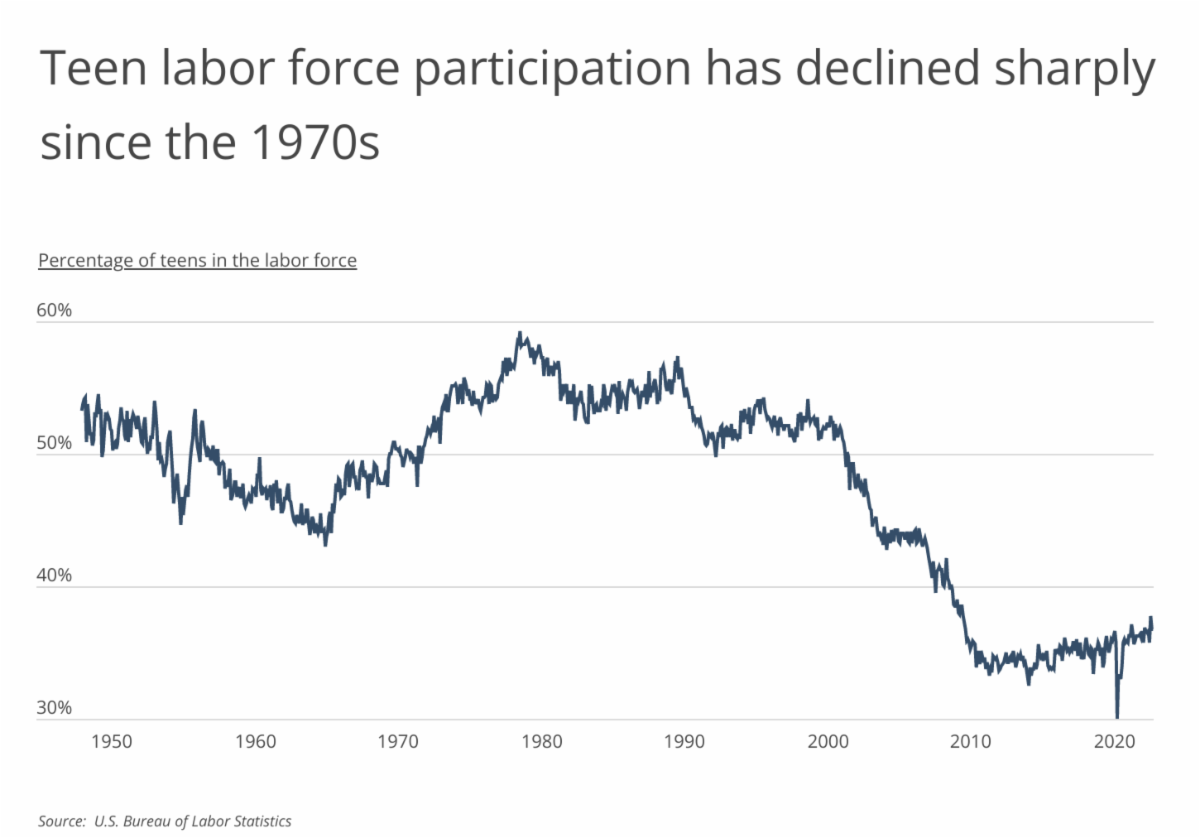
While U.S. teenagers are working at higher rates overall than before the pandemic, the number of working teens varies widely by location. For example, teen labor force participation rates currently exceed 50% in Midwestern states like North and South Dakota, Nebraska, Minnesota, Wisconsin, and Iowa. Utah (53.1%) and Maine (50.9%) also report high teenage labor force participation rates. At the opposite end of the spectrum, states in the Sun Belt region and on the coasts report rates below 40%.
These differences are due to a number of cultural, demographic, and economic factors. For instance, the Midwest has a long history of teens working in agricultural settings. Different racial and ethnic groups show large variation in teen labor force participation. Higher minimum wages are believed to negatively impact the number of teens who are able to secure employment. More recently, differences in COVID-19 policy and responses had major impacts on local labor market conditions, which ultimately affected teen workers differently across states.
The data referenced below is from the U.S. Census Bureau. To determine the locations with the most working teens, researchers at Smartest Dollar calculated the percentage of teens in the labor force. In the event of a tie, the location with the greater total number of teens in the labor force was ranked higher. For school enrollment, teens were defined as those between ages 15–19, but for labor force participation, teens were defined as those between ages 16–19.
The analysis found a 35.3% teen labor force participation rate in Georgia, compared to 38.3% across the nation as a whole. Out of all U.S. states, Georgia has the 10th lowest teen labor force participation rate. Here is a summary of the data for Georgia:
-
Teens in the labor force: 35.3%
-
Teens enrolled in school: 86.6%
-
Teens not in school and not in the labor force: 5.7%
-
Median household income: $61,224
For reference, here are the statistics for the entire United States:
-
Teens in the labor force: 38.3%
-
Teens enrolled in school: 87.8%
-
Teens not in school and not in the labor force: 5.0%
-
Median household income: $64,994
For more information, a detailed methodology, and complete results, you can find the original report on Smartest Dollar’s website: https://smartestdollar.com/research/cities-with-the-most-working-teens-2022
|





